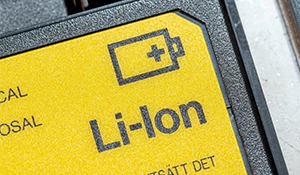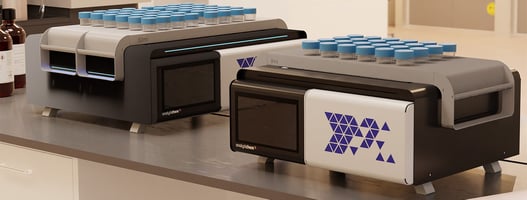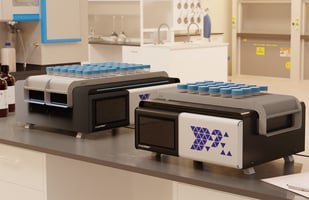Lithium-ion (LI) batteries are an integral part of modern society, powering everything from...
Critical Mineral Rundown: Lithium
Did you know that the global technology infrastructure is critically dependent on just a handful of naturally occurring elements?
Lithium, graphite, cobalt, copper, gallium, germanium, rare earth elements (REE) and nickel are among a group of elements that are essential to the manufacturing of microchips and computers, high resolution display screens and battery power sources. These technologies form the backbone of the internet, wireless technologies and the IoT (Internet of Things) that support today’s infrastructure and are also powering the move to Industry 4.0. Green power and energy storage technologies like wind, solar and EV batteries are also critically dependent on this small group of elements. These elements are mined from geological deposits that are unevenly distributed or limited in nature but critical to the economy, leading many countries to deem them “critical minerals”.
In this series we will review some of the most important of these critical minerals, where they come from and how quality control at various steps in the supply chain is essential. Lithium is one of the most important and discussed of these resources as it is foundational to many of the battery technologies that power our everyday life.
According to Bonnie Charpentier, president of the American Chemical Society, “Lithium-ion batteries are a great example of how chemistry can transform people’s lives.” In fact, the technology is considered so revolutionary that it earned three scientists a Nobel Prize in Chemistry in 2019.1 The New York Times summarized the far-reaching impact of these batteries, “…[the] creation of powerful, lightweight and rechargeable batteries used in nearly every smartphone or laptop computer, and in billions of cameras and power tools. Astronauts on the International Space Station rely on them, and engineers working on renewable energy grids often turn to them. By storing electricity generated when sunlight and wind are at their peak, lithium-ion batteries can reduce dependence on fossil fuel energy sources and help lessen the impact of climate change.”
Lithium changed the possibilities of batteries because it can easily release electrons (key feature for a good anode) while also being the lightest metal. Today, the production of rechargeable batteries represents approximately 74% of global lithium demand2. Many governments have already recognized that lithium is essential for energy transformation plans and our lives will rely more on both new and recycled sources of lithium. As a result, lithium is considered a Critical Mineral.
But the uses of lithium extend beyond lithium-ion batteries into applications in ceramics, glass, pharmaceuticals, and polymers. With all the uses of lithium, many of which are critical to our lives, how will producers keep up with demand?
There are many sources of lithium worldwide. Today, Chile is the leading producer of lithium from brine, and Australia is the leading producer of lithium from pegmatites.

In the case of pegmatite sources, lithium ore is mined using traditional mining techniques (extraction, beneficiation, purification). Flotation is one of the main beneficiation methods used. However, in flotation, reagent chemistry, surface properties, and water quality are all critical to optimize recovery.4 Because of this, lab-scale process trials are a useful tool to ensuring production delivers expected yields.
Brine extraction projects involve building large evaporation ponds that are used to concentrate lithium that is contained in groundwater aquifers, salty lakes, or salt flats. The process is slow, lasting from months to years. The starting concentration of lithium at a location must be high enough to make this process financially feasible, and as a result there are limited locations utilizing this method of lithium production today. For example, the Pure Energy Minerals brine project in Nevada, USA or the Cauchari-Olaroz project that LithiumAmericas is developing in Jujuy, Argentina.
Unfortunately, lithium fields have a large environmental footprint and can deplete groundwater resources for local communities. There is a growing focus on innovation for lithium extraction processes to make them “greener” and ensure that yield and supply are maximized.
One example of this is Direct Lithium Extraction (DLE). CleanTech Lithium provides a clear overview of the typical process: “Brine is extracted from the basin aquifer and pumped to a processing unit where a resin or adsorption material is used to extract only lithium, while spent brine is reinjected into the basin aquifers with no aquifer depletion or harm to the environment. The resin adsorbs lithium chloride (LiCl) molecules onto the surface of the material, which is then stripped using water creating a lithium eluate. This eluate is then further concentrated via reverse osmosis and mechanical evaporation stages before standard industry processes are used to produce battery-grade lithium.”
While DLE is an established technology already being adopted in the industry, there are other novel techniques being explored to sustainability increase lithium production. For example, research featured in Nature Water and reported on by TechXplore utilizes “an evaporation pond on a string” to reduce the footprint and increase the pace of evaporation for lithium brine. Is anyone else suddenly thinking about rock candy?
In addition to producers, recyclers bring lithium materials to the economy. Companies like Ascend Elements have innovated new processes to salvage material from spent lithium-ion batteries and use them to manufacture advanced battery materials, driving circularity for the industry.
Innovations, like those outlined here, and some we can’t even imagine yet, will be essential for producers to meet the exponential growth in lithium demand. Successful innovation is grounded in precise measurement, and this is exactly what we enable at Analytichem. Our complete offering of aqueous ICP and AA ISO 17034 standards, matrix matched ore reference materials, digestion equipment and consumables for analytical laboratories is designed to serve as a foundation for accurate measurement.
Download our Lithium Analysis Brochure or contact us to learn more or request a quotation.
Analytichem – your lithium science enabled.







